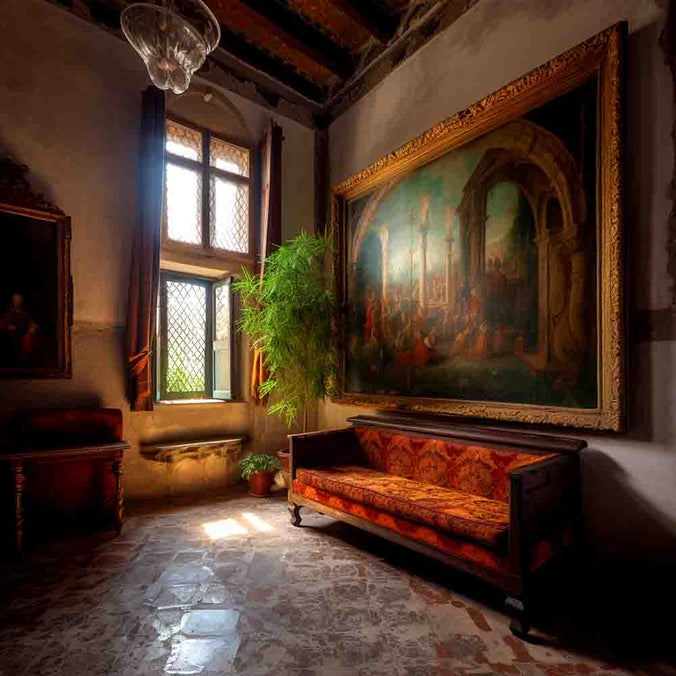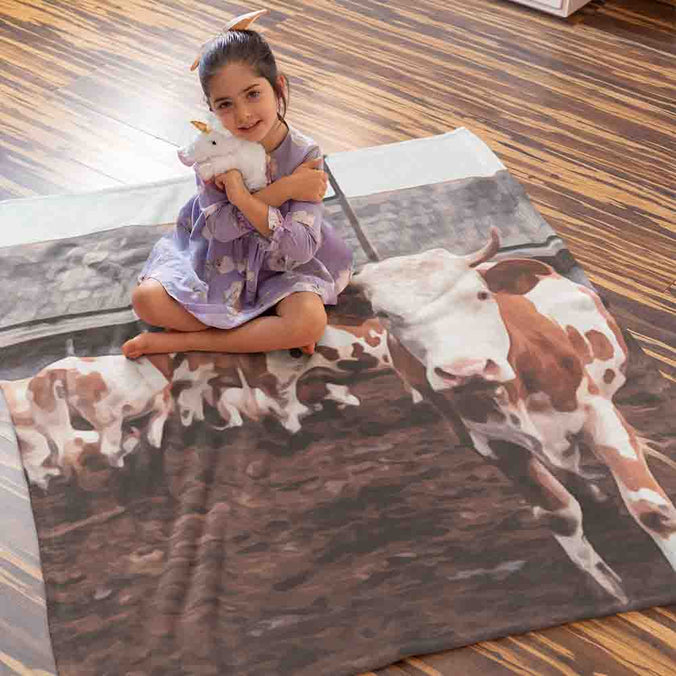Understanding Zen and Its Influence on Home Décor

Understanding Zen and Its Influence on Home Décor
Zen, a school of Mahayana Buddhism, emphasizes meditation, mindfulness, and intuition as paths to enlightenment and has greatly influenced Asian culture, particularly in Japan. In recent years, Zen design principles have become popular in Western home décor, creating calming and restorative atmospheres. Key elements of Zen design include minimalism, natural elements, focus on light and space, earthy color palettes, and incorporation of artwork. To create a Zen-inspired space, maintain a clean, uncluttered environment, use natural materials, choose soft, diffused lighting, incorporate natural elements like plants, prioritize comfort, and arrange your space with Feng Shui principles. Custom wall art and home décor from My Photo Art can help you create a harmonious, balanced living space that promotes relaxation and mindfulness.
The core principles of Zen focus on simplicity, natural elements, and the elimination of unnecessary clutter. These principles have been applied to various forms of art, such as traditional ink painting, calligraphy, and tea ceremony, as well as architectural styles like the minimalist Zen gardens found in temples.
In recent decades, Zen design principles have gained popularity in Western home décor, where they provide a calming and restorative atmosphere amidst the chaos of modern life. The influence of Zen on home decor can be seen in the following ways:
- Minimalism: Zen-inspired spaces are characterized by simplicity, clean lines, and an absence of clutter. This minimalist approach creates a sense of harmony, balance, and peace within the space.
- Use of natural elements: Incorporating materials such as wood, bamboo, stone, and other organic elements is a hallmark of Zen design. These materials help to create a connection with nature and contribute to a calm, soothing ambiance.
- Focus on light and space: Zen design emphasizes the importance of natural light, open spaces, and the interplay between light and shadow. This focus on light and space enhances the sense of tranquility and allows energy to flow freely within the environment.
- Earthy color palette: Zen-inspired home decor often features a muted, earth-toned color scheme, which further contributes to a sense of serenity and balance. Soft shades of beige, gray, and pale green are commonly used in Zen interiors.
- Incorporation of artwork: Zen-inspired artwork, such as traditional ink paintings, calligraphy, or images of Buddha, can help evoke a meditative state and reinforce the calming atmosphere of a space. Artwork in Zen spaces often features simple compositions and a limited color palette to maintain harmony and balance within the room.
As a result of these influences, Zen-inspired home decor has become increasingly popular for individuals seeking a respite from the stresses of modern life. By incorporating Zen design principles into your home, you can create a calming, restorative space that promotes mindfulness, reflection, and inner peace.
Choosing Zen-Inspired Wall Art for a Tranquil Home
Selecting the right Zen-inspired wall art is essential for creating a peaceful, tranquil atmosphere in your home. By incorporating pieces that embody the principles of Zen design, you can foster a sense of calm and balance within your living space. The following guidelines will help you choose Zen-inspired wall art that complements your home décor and enhances the overall ambiance.
- Simplicity and minimalism: Zen-inspired art often features simple, uncluttered compositions that emphasize the beauty of empty space. Look for pieces that convey a sense of harmony and balance through minimalist design elements. Examples include traditional Japanese ink wash paintings (sumi-e) and simplistic calligraphy pieces.
- Nature motifs: Incorporating nature-themed artwork is a key aspect of Zen design, as it helps create a connection with the natural world and instills a sense of peace. Choose art that showcases elements such as trees, rocks, water, or animals in a serene and contemplative manner. For instance, consider selecting pieces depicting tranquil landscapes, like Japanese woodblock prints (ukiyo-e) by artists such as Hokusai or Hiroshige.
- Earthy color palette: To maintain a cohesive and calming atmosphere, opt for artwork that features a muted, earth-toned color scheme. Soft shades of beige, gray, pale green, and brown can be particularly effective in Zen-inspired spaces.
- Symbolic imagery: Zen-inspired wall art may include symbols or images that evoke a meditative state or convey a deeper spiritual meaning. Examples include the enso (a circular brushstroke symbolizing the universe and the void), images of Buddha, or mandala designs, which represent the cosmos and the interconnectedness of all things.
- Scale and proportion: Consider the size and placement of your Zen-inspired wall art in relation to the overall space. Large, oversized pieces can make a bold statement and serve as a focal point, while smaller, more subtle artwork can complement the room without overpowering it. Remember to leave ample empty space around the artwork to maintain a sense of harmony and balance.
By carefully selecting Zen-inspired wall art that embodies these principles, you can create a tranquil, soothing environment in your home that promotes relaxation, mindfulness, and inner peace.
Creating a Zen Oasis with Wall Art and Home Décor
Transforming your home into a Zen oasis involves more than just selecting the right wall art; it also requires careful consideration of your overall décor and design choices. By incorporating elements of Zen aesthetics and principles, you can create a harmonious, tranquil environment that promotes relaxation and well-being. Here are some tips and ideas for integrating Zen-inspired wall art and home décor elements into your living space.
- Maintain a clean, uncluttered space: A Zen-inspired interior should be free of unnecessary distractions and clutter. Embrace minimalism by keeping your decor simple and functional, allowing for plenty of empty space to enhance the sense of tranquility. Consider incorporating built-in storage solutions or hidden compartments to keep belongings neatly tucked away.
- Use natural materials: Zen design emphasizes the use of organic, sustainable materials such as wood, stone, and bamboo. Incorporate these elements into your furnishings, flooring, and decorative items to create a warm, inviting atmosphere that connects you with nature. For example, a bamboo room divider or wooden furniture pieces can add an authentic touch to your Zen oasis.
- Soft, diffused lighting: Lighting plays a crucial role in creating a serene ambiance in your Zen-inspired space. Avoid harsh, direct lighting; instead, opt for soft, diffused light sources that cast a warm, calming glow. Consider using paper lanterns, floor lamps with fabric shades, or dimmable wall sconces to achieve the desired effect.
- Incorporate natural elements: Bringing elements of nature indoors can help create a sense of harmony and balance within your living space. Add potted plants, such as bonsai trees or air-purifying species like peace lilies, to your home decor. You might also consider incorporating a small water feature, such as a tabletop fountain, to promote relaxation through the soothing sound of flowing water.
- Prioritize comfort and relaxation: Your Zen oasis should be a space where you can unwind and recharge. Prioritize comfort by selecting cozy, inviting seating options, like floor cushions, soft rugs, or plush bean bags. You can also create a dedicated meditation or relaxation nook with a comfortable chair, soft lighting, and calming wall art.
- Arrange your space with Feng Shui principles: Align your home décor with the principles of Feng Shui, the ancient Chinese art of creating harmonious, balanced spaces. This may involve positioning your furniture and décor items in a way that promotes positive energy flow or incorporating specific elements, such as mirrors or crystals, to enhance the overall energy of your home.
By combining Zen-inspired wall art with thoughtful home décor choices, you can create a peaceful sanctuary that promotes relaxation, mindfulness, and well-being.
Incorporating Zen-inspired custom wall art and home décor into your living space can significantly enhance the tranquility and harmony of your environment. To achieve this, it's essential to understand the principles and aesthetics of Zen design, such as the use of natural materials, minimalism, and Feng Shui principles. By carefully selecting Zen-inspired custom wall art based on your personal photos and coordinating your home décor with these principles, you can create a serene oasis that promotes relaxation, mindfulness, and well-being.
At My Photo Art, we're committed to helping you transform your home into a haven of peace and tranquility. Our carefully curated selection of custom artwork options, such as canvas prints, tote bags, magnets, blankets, and pillows, are designed to help you create a harmonious, balanced living space that reflects your unique style and promotes relaxation. Explore our collection today and embark on your journey toward a more mindful, Zen-inspired home using your cherished photos as the centerpiece of your décor.
References:
- Suzuki, D. T. (1959). Zen and Japanese Culture. Princeton University Press.
- Irmsher, K. (2016). Zen Gardens and Temples of Kyoto: A Guide to Kyoto's Most Important Sites. Tuttle Publishing.
- Okakura, K. (1906). The Book of Tea. Dover Publications.
- Addiss, S. (1994). The Art of Zen: Paintings and Calligraphy by Japanese Monks, 1600-1925. Harry N. Abrams.
- Keene, D. (1999). Japanese Aesthetics and Culture: A Reader. State University of New York Press.
- Irmsher, K. (2016). Zen Gardens and Temples of Kyoto: A Guide to Kyoto's Most Important Sites. Tuttle Publishing.
- Alcock, N. (2018). New Zen: The Quantum Leap From Mind to No-Mind. Zen Is Right Here. Osho Media International.
- Rossbach, S. (1987). Feng Shui: The Chinese Art of Placement. Arkana.
- Suzuki, D. T., & Fromm, E. (1960). Zen Buddhism and Psychoanalysis. Harper & Row.
Leave A Reply
Your email address will not be published. Required fields are marked *






